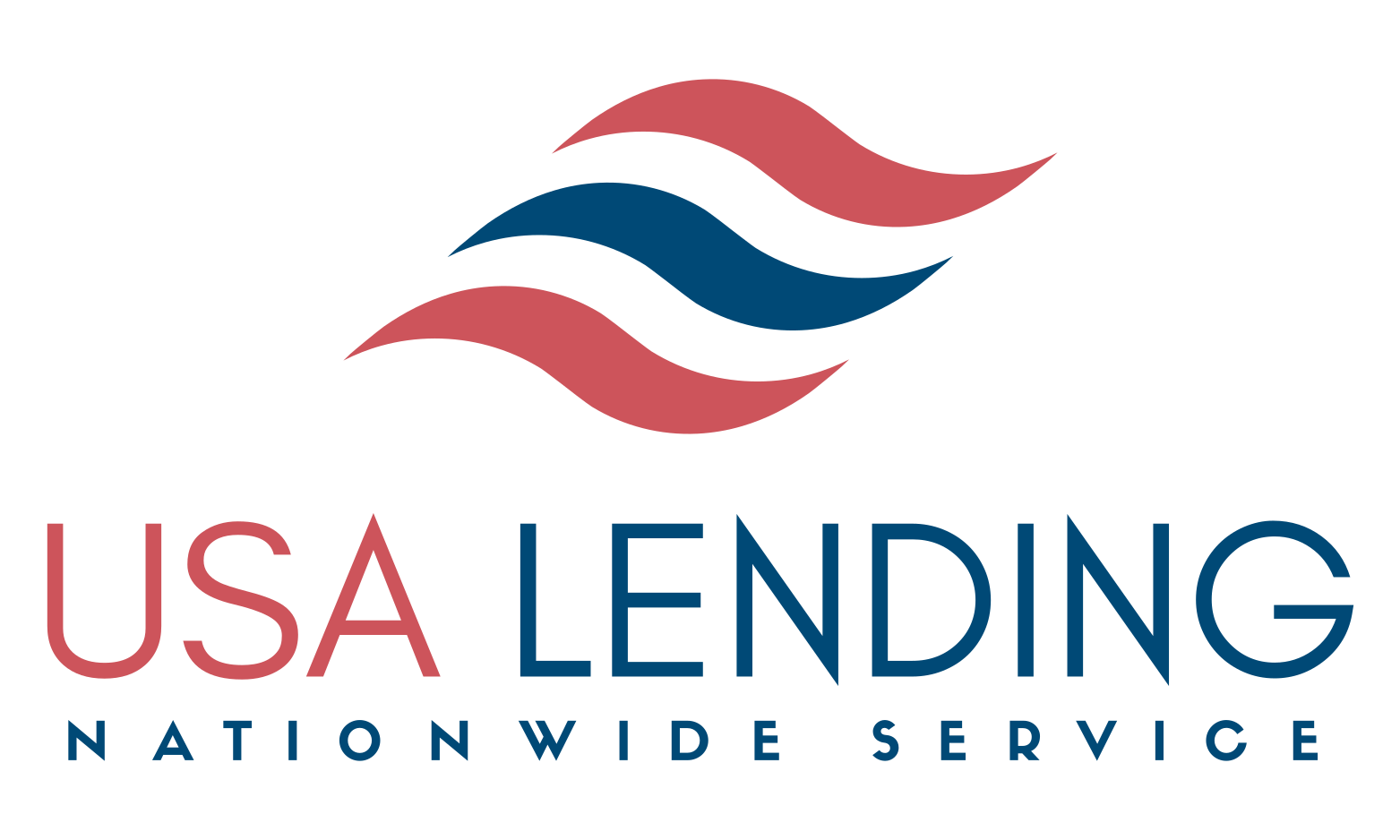When you finance a home or any other property, the first hurdle that often comes…
How to Get the Best Mortgage Rate: Expert Tips for Lower Interest in 2024
People often ask us how to get the best mortgage rate. Securing the best mortgage rate can significantly affect the total cost of your home over the life of the loan. The mortgage rate directly influences your monthly payments and the affordability of your home purchase. It’s essential to understand the factors that lenders consider when setting rates, which include credit scores, down payments, and the overall economic climate. To ensure we’re getting the most favorable rate, it’s crucial to have our finances in order and to understand the basics of how mortgage rates work.

While the Federal Reserve and market conditions play a considerable role in mortgage rate fluctuations, we have the power to improve our likelihood of securing lower rates. Strategies such as improving our credit score, saving for a larger down payment, and understanding the right time to lock in a rate can make a substantial difference. The mortgage application process can be complex, but with the right preparation and knowledge, we can navigate it effectively to find the best terms available.
Key Takeaways
- A low mortgage rate can reduce monthly payments and save money over time.
- The Federal Reserve and economic factors influence mortgage rates, but personal financial health is also crucial.
- Preparation and understanding of the mortgage process are key to securing the best mortgage rate.
Understanding Mortgage Basics
Before we embark on the journey to secure the best mortgage rate, it’s crucial to understand the fundamentals of mortgages. This knowledge will empower us to make informed decisions and select a mortgage that aligns with our financial goals and capabilities.
Types of Mortgages
Conventional Mortgages: These are not insured or guaranteed by the government and are the most common type of home loan.
FHA Loans: Insured by the Federal Housing Administration, these loans allow lower credit scores and down payments as low as 3.5%.
VA Loans: Exclusive to veterans, active-duty service members, and eligible spouses, VA loans are guaranteed by the Department of Veterans Affairs. They offer competitive terms and no down payment options.
USDA Loans: The U.S. Department of Agriculture supports these loans for rural and suburban homebuyers who meet certain income requirements.
Adjustable-Rate Mortgage (ARM): This loan type begins with a fixed interest rate for a specified term, after which the rate can change periodically based on market conditions.
Fixed-Rate Mortgage: The interest rate stays the same for the life of the loan, which can typically range from 15 to 30 years.
Mortgage Loan Terms
- 30-Year Fixed-Rate Mortgage: Offers lower monthly payments spread over 30 years, but with more interest paid over the life of the loan.
- 15-Year Fixed: This loan is paid off in half the time, usually with a lower interest rate compared to the 30-year option, leading to less overall interest paid.
Loan terms will also define other important details, including the interest rate, monthly payment schedule, and whether there are any penalties for early repayment.
Mortgage Amortization
Amortization refers to the process of paying off a loan with regular payments over time. Each payment goes towards both the interest and principal balance of the loan.
- Early in the loan term, a larger portion of the payment is typically applied to interest.
- As time goes on, a greater percentage is applied to the loan’s principal.
Understanding how amortization works is vital for us to grasp how our mortgage balances will decrease and how much interest we’ll be paying over the life of the loan.
Factors Affecting Mortgage Rates
When we apply for a mortgage, lenders assess various elements of our financial profile to determine the interest rate we’ll receive. Let’s break down a few critical factors that significantly impact the rates we are offered.
Credit Score Impact
Our credit score is one of the pivotal factors that lenders consider when setting mortgage rates. A higher credit score indicates to lenders that we are less risky borrowers, which typically leads to more favorable interest rates. Borrowers with credit scores in the higher range can often secure lower mortgage rates because lenders believe the likelihood of default is less.
Loan-to-Value Ratio
The Loan-to-Value (LTV) ratio measures the relationship between the loan amount and the property’s value. Lenders look at the LTV ratio to gauge their risk in lending to us. A lower LTV ratio means we are borrowing less against the property’s value, often translating to lower interest rates. A higher down payment can reduce our LTV, favorably impacting the rates we’re offered.
Debt-to-Income (DTI) Ratio
The DTI ratio is another critical metric lenders use, which represents the percentage of our gross monthly income that goes toward paying our debts. It helps lenders evaluate our ability to manage monthly payments and repay the loan. To secure the best mortgage rates, we aim for a lower DTI ratio, showing lenders that we have a balanced control over our debt in relation to our income.
Strategies for Lowering Your Mortgage Rate
When seeking a mortgage, we aim to secure the best terms possible. This often boils down to one critical element: the interest rate. A lower rate can equate to significant savings over the life of the loan. Let’s explore practical steps that can guide us to a more favorable outcome.
Shopping Around for Lenders
Shopping around is an essential step in finding the best mortgage rate. We should start by comparing offers from multiple lenders to understand the average rates for someone with our financial profile. Often, local banks, credit unions, and online lenders may offer competitive rates. It’s not just about finding the lowest number but also ensuring that the lender is reputable and provides good service.
Considering Mortgage Points
Mortgage points, also known as discount points, can be a strategic tool in lowering our interest rate. One point typically costs 1% of the loan amount and can reduce our interest rate by a certain percentage. For instance, purchasing points might reduce a 4.5% rate to 4.25%. We must calculate if the upfront cost will lead to sufficient long-term savings.
Larger Down Payments
A larger down payment could result in a lower interest rate, as it decreases the lender’s risk. The standard recommendation is 20% of the purchase price, but any amount above that could potentially negotiate our rate down further. Additionally, a hefty down payment can help us avoid the extra expense of private mortgage insurance (PMI).
By employing these strategies thoughtfully, we can position ourselves for savings and secure the best mortgage rate to suit our financial goals.
The Role of the Federal Reserve and Market
Understanding the role of the Federal Reserve, commonly known as the Fed, and market conditions is essential when looking for the best mortgage rates. The Fed’s monetary policies and prevailing market conditions significantly influence rates, particularly for long-term loans such as the 30-year fixed mortgage.
Federal Reserve’s Influence
The Federal Reserve sets the tone for our nation’s economic health and the cost of borrowing money. By adjusting the federal funds rate, the rate at which banks lend to each other overnight, the Fed indirectly affects mortgage rates. When the Fed increases the interest rate to curb inflation, mortgage rates tend to rise. Conversely, rates typically fall when the Fed lowers the interest rate to stimulate the economy. Our understanding of the Fed’s actions allows us to gauge expectations for changes in mortgage rates.
Market Conditions and Mortgage Rates
Mortgage rates are also swayed by broader market conditions, including the 10-year Treasury yield which often moves in tandem with 30-year fixed mortgage rates. As investors’ perceptions of the economy change, they may shift funds between bonds and stocks, influencing yields and, consequently, mortgage rates. The national average mortgage rate is a benchmark that reflects these underlying market forces. By staying informed on market trends and economic indicators, we can better predict mortgage rate fluctuations and identify the most favorable times to secure a loan.
Preparing Your Finances
To secure the best mortgage rate, it’s essential we focus on financial health. A robust credit profile and a manageable debt-to-income ratio are paramount in presenting ourselves as ideal borrowers to lenders.
Improving Your Credit Profile
Credit score: We need to meticulously review our credit report for any errors, disputing them immediately to ensure our credit score accurately reflects our creditworthiness. Regularly paying bills on time and maintaining low credit card balances can improve our score, leading to personalized rates more favorable to our financial situation.
Strategies:
- Check reports: Obtain a free credit report and comb through it for inaccuracies.
- Reduce balances: Aim to keep credit card balances well below the credit limits.
- Payment history: Consistently pay all bills on time, every time.
How to Get the Best Mortgage Rate By Managing Your Debt and Income
Debt-to-Income Ratio (DTI): Lenders scrutinize our DTI to determine if we can comfortably manage monthly payments. It’s advantageous for us to maintain a DTI below 36% though some lenders may allow higher. Reducing debt before applying for a mortgage will improve our DTI ratio.
Savings and Employment: Solidifying our employment history and boosting our savings can prove to lenders that we are financially responsible. Amassing enough savings to cover several months of mortgage payments reflects positively on our ability to repay the loan.
Key Steps:
- Reduce debt: Prioritize repaying high-interest debts and avoid incurring new debt.
- Increase income: Explore opportunities for a raise at work or a side job to augment our gross monthly income.
- Strengthen savings: Build a sizable reserve to cover unforeseeable expenses without impacting our monthly mortgage commitments.
The Mortgage Application Process
To secure a favorable mortgage, it’s essential we understand the steps involved and the details of loan estimates and closing costs. Our journey starts with pre-approval and culminates in a clear understanding of the costs associated with closing the loan.
How to Get the Best Mortgage Rate on Pre-approval and Loan Estimates
Before house hunting, obtaining a mortgage pre-approval is crucial. This signals our seriousness to sellers and gives us a clear idea of what we can afford. During pre-approval, we’ll submit financial documents like pay stubs and, if self-employed, two years of tax returns. Lenders will examine our credit and offer a loan estimate, which outlines the potential interest rate, principal, and APR (Annual Percentage Rate) of the mortgage.
This loan estimate is a vital document; it allows us to use a mortgage calculator to predict monthly payments and decide the best course. Especially for first-time homebuyers, understanding the loan estimate lays the groundwork for a successful purchase by detailing costs up front.
Understanding Closing Costs
Closing costs encompass a range of fees and expenses we pay to finalize the mortgage. These can include origination fees, title insurance, and appraisal costs. By law, lenders must provide a Closing Disclosure outlining these costs at least three business days before closing. It’s our responsibility to review and compare this to our initial loan estimate.
These costs typically range from 2% to 5% of the loan’s principal and can be a deciding factor in the affordability of a mortgage. It’s in our best interest to budget for these and possibly negotiate with the seller to cover a portion, which can be particularly helpful for us as the buyer.
How to Get the Best Mortgage Rate with Refinancing Options
Refinancing our mortgage can be a financially advantageous move if we do it for the right reasons and at the right time. It’s crucial to understand when to refinance and the types of refinance loans available to ensure we secure the best possible terms.
When to Consider Refinancing
We should consider refinancing our mortgage when current mortgage rates are significantly lower than our existing rate, as this can reduce our monthly payments and save money over the life of the loan. A general guideline is to refinance if we can reduce our interest rate by at least 0.5% to 1%. Additionally, if we’ve built up substantial equity in our home or our financial situation has improved since we took out the initial loan, refinancing could grant us better loan terms or the opportunity to switch loan types.
Another moment to consider refinancing is if we are interested in changing the term of our mortgage. For instance, switching from a 30-year to a 15-year fixed mortgage can increase our monthly payments but potentially save tens of thousands in interest and pay off our home much faster.
Types of Refinance Loans
Refinance loans come in various forms to meet different financial situations. Here are some common types of refinance loans:
- Fixed-Rate Mortgages: These loans keep the same interest rate for the entire loan term, which provides financial stability with predictable monthly payments.
- Adjustable-Rate Mortgages (ARMs): ARMs often start with lower rates than fixed-rate mortgages for an initial period, after which the rate adjusts at predetermined intervals.
- FHA Loans: Refinancing with a Federal Housing Administration (FHA) loan can be beneficial, especially for those with less-than-ideal credit scores or smaller down payments.
- VA Loans: For veterans and active military members, refinancing with a Veterans Affairs (VA) loan can offer favorable terms, such as no down payment or private mortgage insurance requirements.
- Conventional Loans: These are not government-insured and may come with stricter qualification requirements but could offer better interest rates for those with strong credit.
When exploring refinancing options, we must carefully compare interest rates, fees, and terms from multiple lenders to determine which type of loan aligns best with our financial goals.
Insurance and Additional Costs
When securing the best mortgage rate, we must consider not only the interest rate but also private mortgage insurance (PMI) and other unavoidable expenses of homeownership. These additional costs can significantly affect our monthly mortgage payments, so it’s crucial to understand them thoroughly.
Understanding PMI
Private Mortgage Insurance, or PMI, is a type of protection that mortgage lenders require from us, the borrowers, when we put down less than 20% of the home’s purchase price. PMI is designed to protect the lender in case we default on our loan. The cost of PMI varies, but it’s typically between 0.5% and 1% of the entire loan amount on an annual basis. This expense is usually included in our monthly mortgage payments.
- How to avoid PMI:
- Aim for a 20% down payment.
- Consider a lender-paid mortgage insurance, which may increase the interest rate.
- Explore government-backed loans (like VA loans), which may not require PMI.
Other Homeownership Expenses
Other than PMI, we must budget for several additional homeownership expenses:
- Property Taxes: A yearly tax that can be quite significant depending on the location and value of our home. Most often, this is paid as a part of the monthly mortgage payment into an escrow account.
- Property tax rates can be found on local government websites or by contacting a local tax assessor’s office.
- Homeowners Insurance: This covers unexpected damage to our home and possessions. Lenders require this insurance to safeguard their investment, and its cost is also typically rolled into our monthly mortgage payments.
- HOA Fees: If our property is part of a homeowners’ association (HOA), we’ll need to pay monthly or annual fees. These fees cover community maintenance and amenities but vary widely based on the services provided.
Always review these costs in detail to prevent surprises in your overall monthly payment.”:– Accessing information on the government’s role in interest rates can also offer insights into how fluctuations might affect these additional homeownership costs.
Frequently Asked Questions
Navigating the complexities of mortgage rates can be daunting, but understanding the right strategies and factors can lead to significant savings. We’re here to offer insights to some of the most pressing concerns that borrowers have.
What strategies can first-time buyers employ to secure a lower mortgage rate?
First-time homebuyers have distinct advantages, such as access to FHA loans which offer competitive rates. It’s important for us to maintain strong credit scores and save for a substantial down payment, as these factors directly affect the rates we’re offered.
What factors influence lenders in offering better mortgage rates?
Lenders consider credit score, loan-to-value ratio, debt-to-income ratio, and employment history when determining rates. A higher credit score and larger down payment generally result in more favorable rates.
How can existing homeowners reduce their mortgage interest rate without refinancing?
Homeowners can look into mortgage modification programs or lender incentives for timely payments. In some cases, improving one’s credit score can lead to better rate terms with the current lender.
What are the expectations for mortgage rates changes in the near future?
While we cannot predict future rates with absolute certainty, economic indicators and policy changes by the Federal Reserve can suggest trends. Monitoring economic reports and projections can offer us some insight.
How does one qualify for a sub-4% mortgage rate in the current economy?
Securing a sub-4% mortgage rate requires excellent credit, a low debt-to-income ratio, a significant down payment, and shopping around for the best offer. Checking rates from multiple lenders is key.
At what point is a mortgage interest rate considered too high, and how can this be avoided?
An interest rate significantly above the current average for similar loans may be considered too high. To avoid this, we should aim to improve our credit scores, save for a larger down payment, and compare rates from various lenders.




